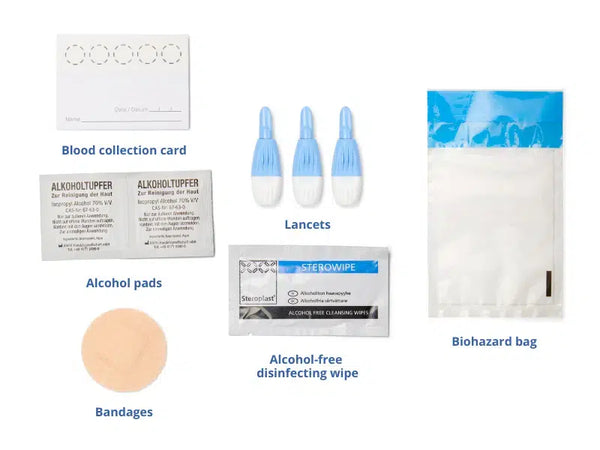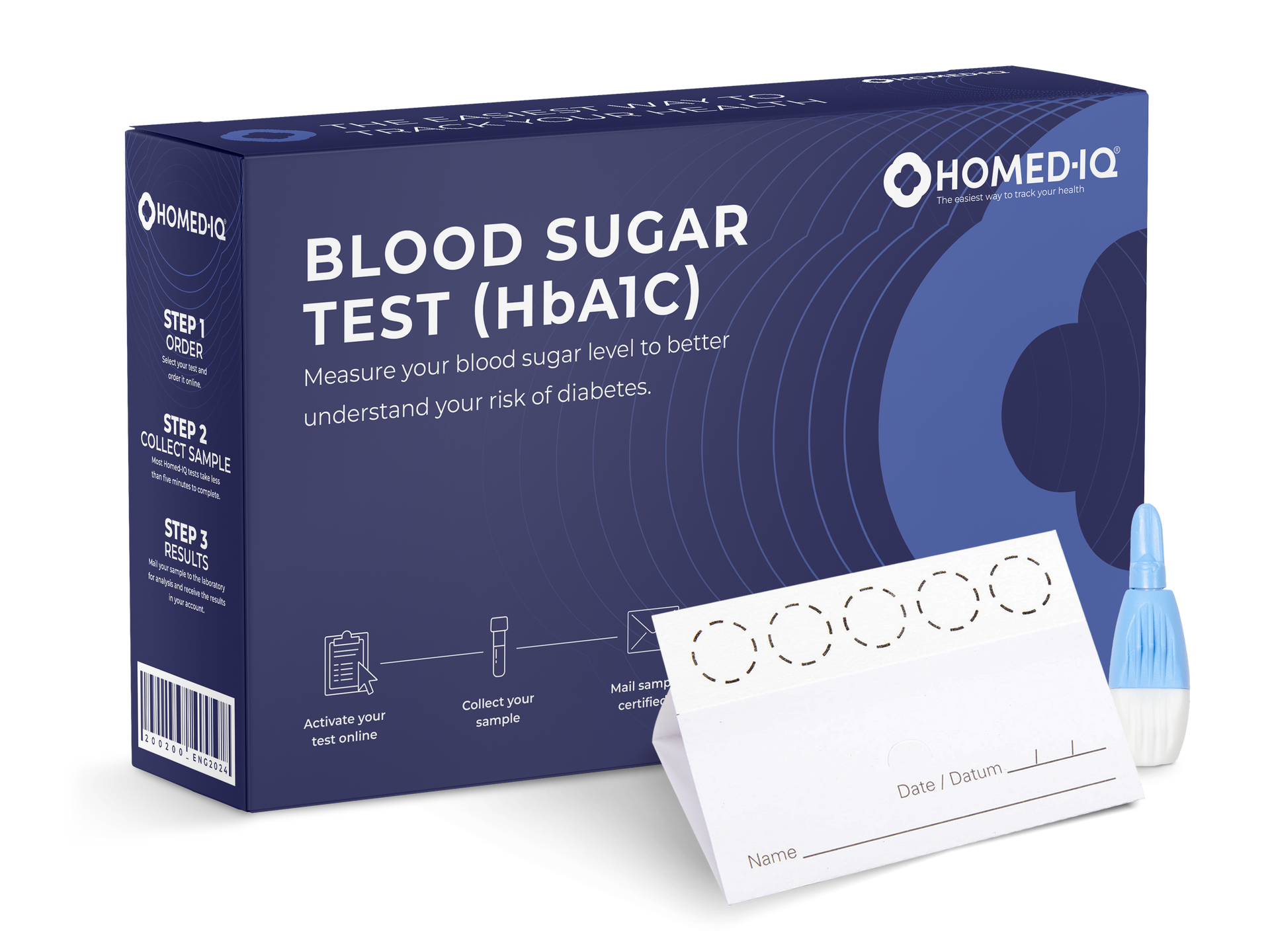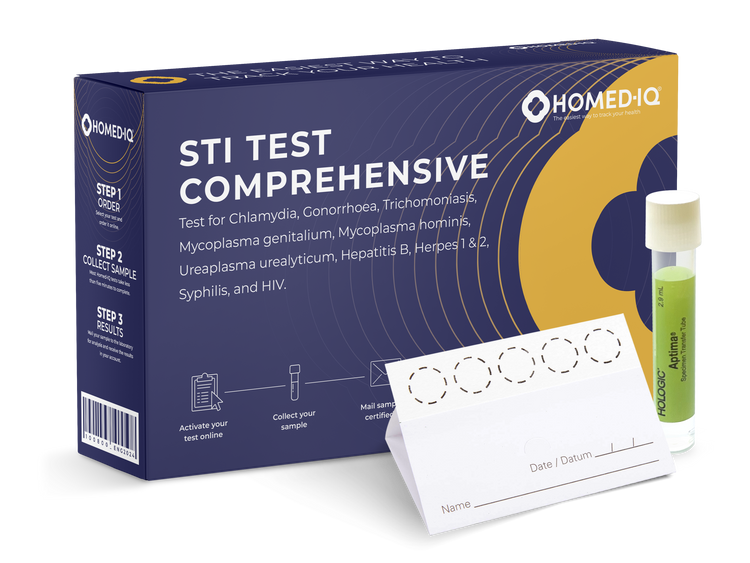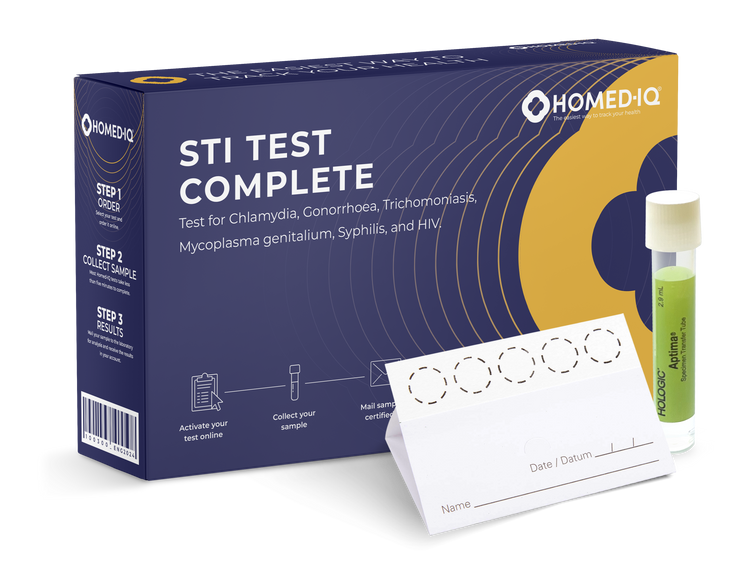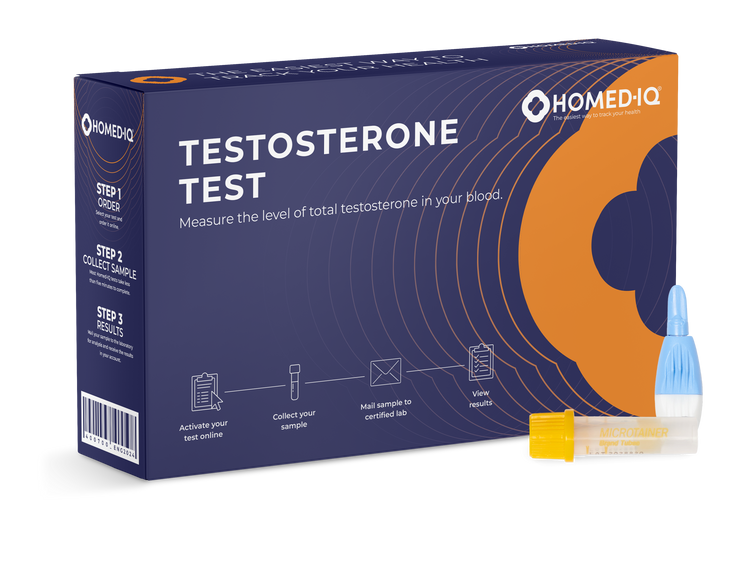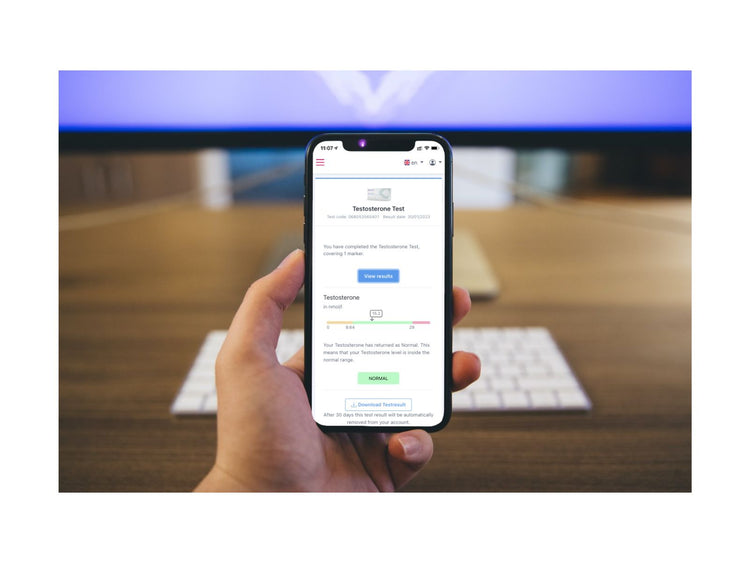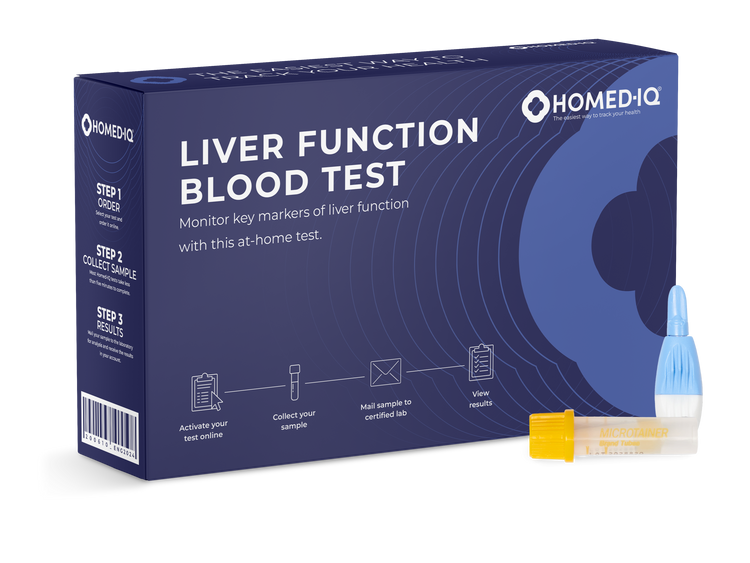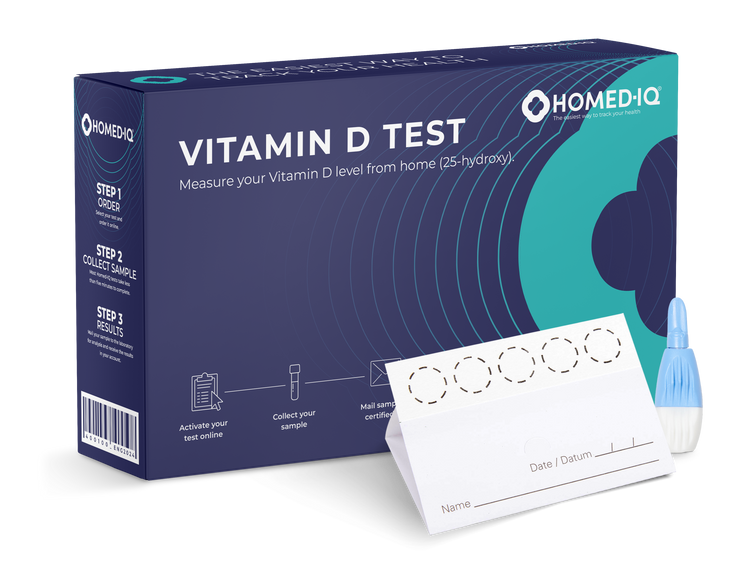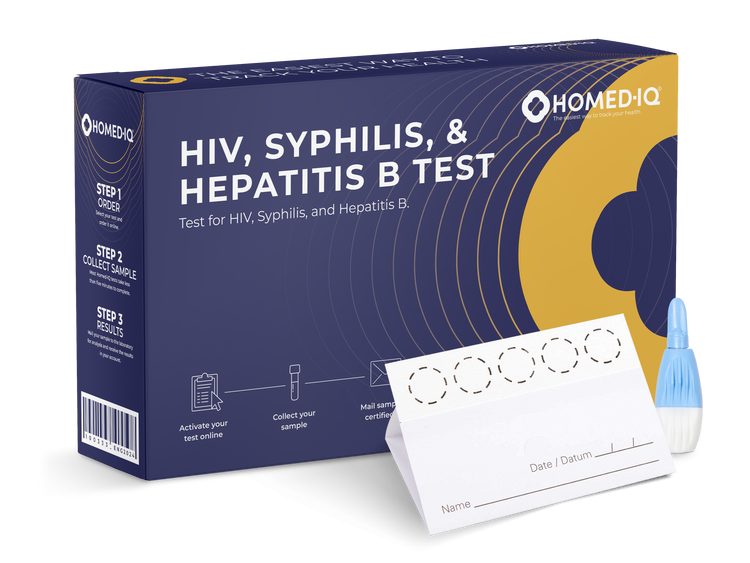Blood Sugar Test (HbA1c)
FREE SHIPPING
Do you think you may have diabetes or pre-diabetes? Diabetes is a disease in which your body can’t make insulin or use it effectively to control blood sugar. While diabetes is a highly common disease, some people do not know they have it as they have no symptoms. Learning your blood sugar level means that treatment or preventive lifestyle changes can be implemented if needed. This test measures the HbA1c level in your blood, indicating your average blood sugar level over the past three months. If it is too high, this may indicate pre-diabetes or diabetes.
Test mode:
Finger prick dry blood spot test
FAQs
Who is this blood sugar test suitable for?
Is this HbA1c home test suitable for pregnant women?
How reliable is Homed-IQ's testing process?
Is this HbA1C blood test an alternative to a blood test performed at the doctor?
Can this test be used to diagnose type 1 diabetes?
Why is it important to measure your blood sugar?
How often should I perform a HbA1c test?
Are there ways to lower blood glucose levels?
What is the difference between an HbA1c test and a glucose reading?
Will my health insurer reimburse this blood sugar test?
What is pre-diabetes?
What proportion of the population has diabetes?
How does it work?
-
![Woman in professional cozy kitchen with Homed-IQ test kit]() 1
1Order your test
Fast and discrete letterbox delivery
-
![]() 2
2Activate & take your sample
Video instructions included
-
![]() 3
3Laboratory analysis
ISO - Certified lab network
-
![]() 4
4Receive your results
Easy access through mobile

